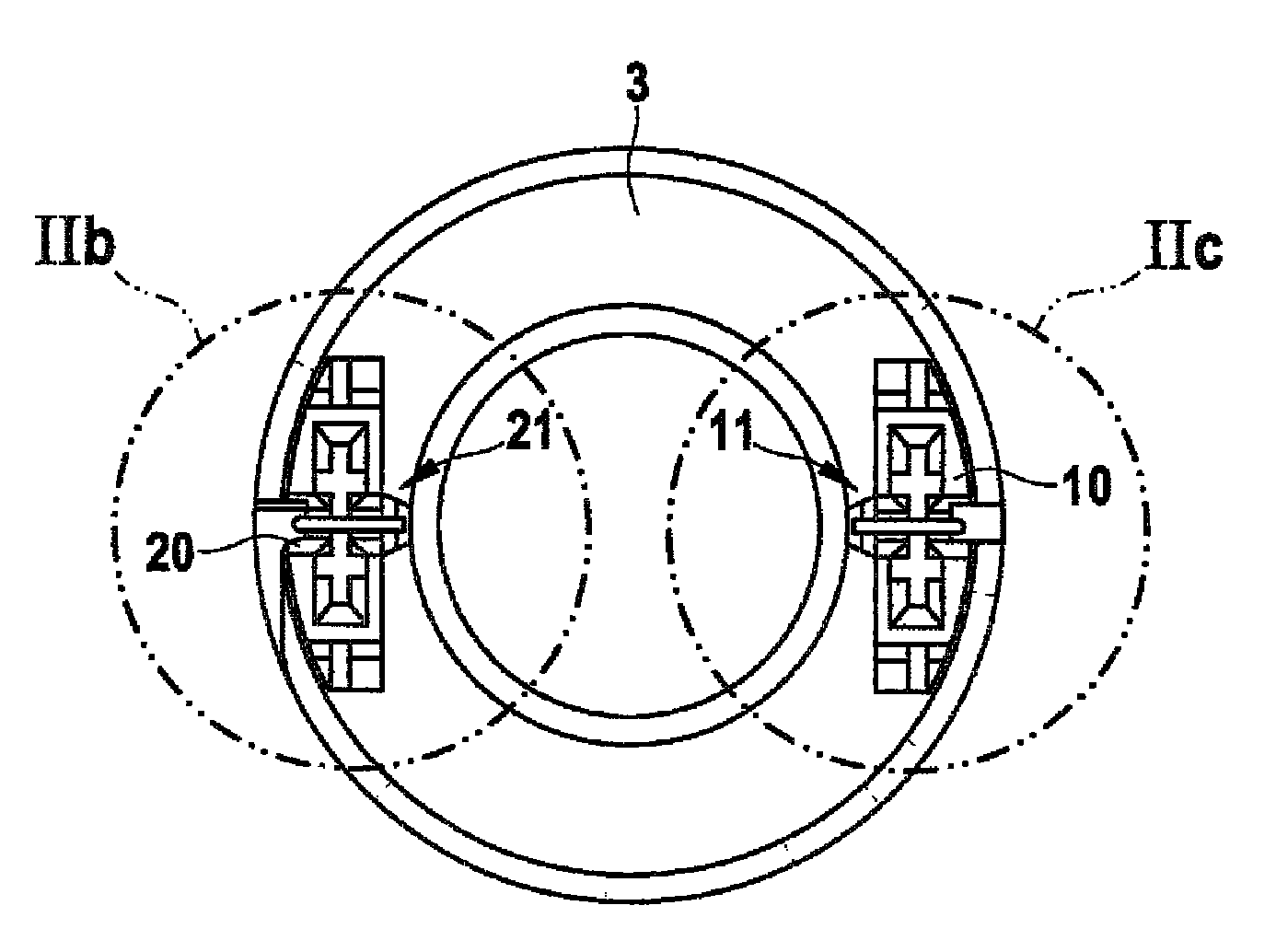Method and arrangement for winding a winding wire onto a winding body and associated magnet assembly for a solenoid valve
a technology of winding wire and solenoid valve, which is applied in the direction of valves, mechanical devices, transformers/inductance coils/windings/connections, etc., can solve the problems of shrinkage and water absorption, process influences after injection molding, and shearing of insulation, etc., to increase process reliability, less cross section, and the effect of increasing the process reliability
- Summary
- Abstract
- Description
- Claims
- Application Information
AI Technical Summary
Benefits of technology
Problems solved by technology
Method used
Image
Examples
Embodiment Construction
[0024]As shown in FIGS. 1 through 3b, a magnet assembly 1 for a solenoid valve includes a winding body 3 that has a first electrical connection dome 10, which is equipped with a first wire-receiving slot 12 embodied in the form of a cutting-and-clamping connection 13 into which slot a winding wire beginning 4.1 is threaded, and a second electrical connection dome 20, which is equipped with a second wire-receiving slot 22 embodied in the form of a cutting-and-clamping connection 23 into which slot a winding wire end 4.2 is threaded. A magnetic circuit of the magnet assembly 1 is formed by a housing casing 2 and a covering disk 5 that is press-fitted into the housing casing 2. The electrical connection domes 10, 20 are embodied, for example, in the form of injection-molded plastic parts. As is also shown in FIGS. 2a through 2c, the first electrical connection dome 10 and the second electrical connection dome 20 each have a respective wire support 11, 21 equipped with a respective firs...
PUM
| Property | Measurement | Unit |
|---|---|---|
| diameter | aaaaa | aaaaa |
| shape | aaaaa | aaaaa |
| shapes | aaaaa | aaaaa |
Abstract
Description
Claims
Application Information
 Login to View More
Login to View More - R&D
- Intellectual Property
- Life Sciences
- Materials
- Tech Scout
- Unparalleled Data Quality
- Higher Quality Content
- 60% Fewer Hallucinations
Browse by: Latest US Patents, China's latest patents, Technical Efficacy Thesaurus, Application Domain, Technology Topic, Popular Technical Reports.
© 2025 PatSnap. All rights reserved.Legal|Privacy policy|Modern Slavery Act Transparency Statement|Sitemap|About US| Contact US: help@patsnap.com



